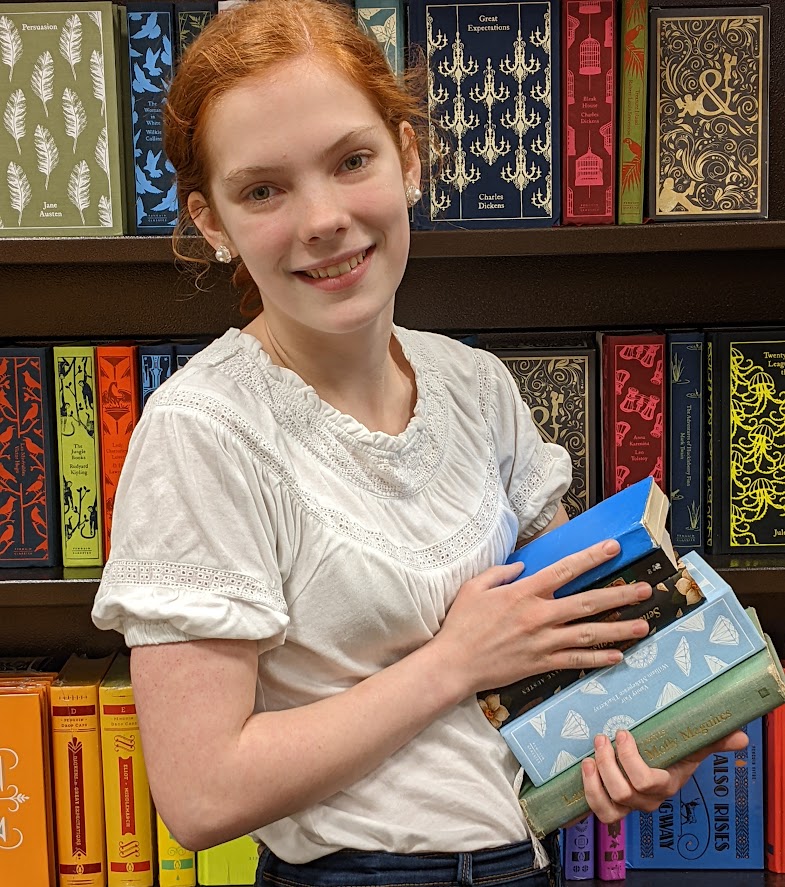Writing believable character development can often be difficult. After managing to craft a perfect character, corrupting them with a flaw, and then dragging them through enough events to completely destroy them, it often seems impossible to prove that this flaw — which has now been such an integral part of their character — is gone forever. In fact, many stories I have read have forgotten to get rid of the flaw at all, let alone prove that the change is permanent.
And it truly is difficult, especially when weaving in themes of contentedness, selflessness, and sacrifice. Because we do want to reward our characters, right? When all is said and done, it can be hard not to spoil them. They’ve been through enough to deserve it, after all.
So how do our readers know that they won’t slip back into the old habits now that the pressure to change has been removed? And even before that, how do we prove that the characters have really changed to begin with?
To answer that, I would like to look at a thin little book named Catherine, Called Birdy.
Catherine, Called Birdy
Catherine’s father is a knight well off enough to be able to make marriage alliances yet still greedy enough that he doesn’t care who actually ends up marrying his daughter, as long as he is rich. Catherine (undisciplined, incredibly witty, and opinionated) is outraged. She finds fault with each suitor that comes to the door. Whether he’s too clean, not enough, or just plain boring, Catherine can’t imagine spending the rest of her life with any of them. Catherine wields her wit against her suitors like a weapon, sending each one packing through tricks, deception, and sheer luck.
All she wants is to be left alone with the beautiful hills surrounding their manor, her menagerie of birds that earned her the nickname Birdy, and the goat boy, Perkin, who seems to be the only person who truly understands her and truly expects nothing of her. Her nurse resents her aversion to chores, her mother wants her to be the ladylike daughter-of-a-knight she knows Catherine could be, and her father wants her to stop playing tricks long enough for him to marry her off to a wealthy suitor.
Unfortunately, her luck, tricks, and wit eventually run out.
When a fat, shaggy-bearded man from distant lands arrives at the manor, boasting of more wealth than her father could have hoped for and a young son near Catherine’s age, Catherine is revolted. The very thought of being related to the man turns her stomach, especially at meal times, when he talks and chews at the same time and belches like a dragon. Catherine begins to devise a plan to get rid of him and his son altogether, when she is dealt a shock so severe that she isn’t able to take the thought seriously for months.
Shaggy Beard doesn’t want her to marry his son.
He plans to marry her himself.
Catherine spends the following six months pouring her heart into her journal: denying that it could ever happen, trying to occupy herself with other distractions, and occasionally attempting to come up with plots to run away from home. But she has no skills of any worth outside of the manor, and her wit is useless against two men who have only wealth on their minds. Reality is turning out to be far worse than anything Catherine could have imagined, and she can’t see any way of escape. Nervously, she counts down the days until Shaggy Beard’s men will arrive to take her to wed him.
Finally, with no plan, no comfort, and no escape, the men arrive.
Driven by fear and feeling half mad, Catherine runs through the woods, away from the manor, her family, and the man who hoped to marry her. Only when she’s half way there does she realize where she’s running to — her Aunt Ethelfritha’s house, who is supposedly crazy but always had kind words to offer Catherine. After three days of travel through the woods, Catherine arrives at her refuge, pours out her tale, and asks Ethelfritha if she is willing to help. Her aunt agrees, but an entire evening of brainstorming offers no viable solution. They both go to bed, planning to ask Catherine’s uncle, George, what he thinks once he returns home the next morning, although Catherine fears he will send her home. When they both awake, Ethelfritha is mad again, making plans to ship Catherine over three years of desert and mountain dressed as a slave to be a present for an unnamed and far-off khan. Catherine, frustrated and hopeless again, sits outside under a pear tree, trying to decide what to do before her Uncle George arrives and tells her to go home.
And it is there — under that tree — that she has her epiphany. Catherine realizes that she, like Ethelfritha, can never truly become someone she is not. Ethelfritha may pretend to be a slim dancing girl for an Arabian sultan, but she never will be. Catherine may try to be a wart charmer or a monk or even a young slave girl, but she never will be those, either. Her home, her family, her identity that she found in her village and those she loves, is too strong for that. She realizes that if she throws that away, she will have lost herself.
But she also realizes that if she keeps that, she can never be lost.
She can be Lady Shaggy Beard, the wife of a man who cares for nothing but riches and power, but underneath all that, she will always be Catherine, called Birdy. No matter who she marries, her identity will remain stronger than her circumstances. She finds herself with a strength that she never possessed before. She now has something stronger than her wit, her tricks, and her stubbornness. She has found something truly powerful, and nothing, not even Shaggy Beard, can take that away from her.
So when her uncle arrives and tells her to go home, she agrees. It will not be easy, but she has found something stronger than the difficulties she will have to face.
When she arrives home, she discovers that the messengers that came from Shaggy Beard’s manor came not to summon her as a wife, but inform her father that Shaggy Beard had been killed during a tavern brawl. The messengers give Catherine a token from Shaggy Beard’s son Stephen, an enameled brooch of a bird with a pearl in its beak. It means that Stephen is willing to honor the marriage contract in his father’s place.
The final paragraphs of her journal are filled with hopeful lines about the endless possibilities of her new husband, a young man known to love learning and cleanliness, who sent her such a beautiful, romantic present. She knows the future will not be perfect and may not be easy, but she has learned enough to face whatever lies ahead with hope and determination.
How Do We Know She Changed?
It’s nice to know that Catherine is more positive than she was before, but how do we know she’s actually changed? How do we know that this isn’t just a short bout of positive emotion that will dissipate after the thrill of discovering a new truth has worn off?
The author, Karen Cushman, doesn’t just tell us that Catherine has changed. Instead, she goes out of her way to put an event in Catherine’s life that shows the audience she has changed. Catherine spent the entire book assuming the worst about her suitors, not giving most of them more than a single glance before deciding to come up with a plan to get rid of them. She’s done this consistently enough that it is a core part of her character. We know now that when she’s decided against something, she tends to stay close-minded instead of giving it a second chance. We see this not only through the suitors, but also with her relationship with her brother, her father, and her close friends. She decided what she thought about them at first glance and spent the rest of the book trying to fit their actions into her preconceived mold of what she believed about them.
If Shaggy Beard had simply died without an heir and Catherine’s father had met her with a miraculous change of heart, promising that she could marry whom she chose, we would have had a hard time believing that Catherine had changed. Sure, she would have had an epiphany that lifted her spirits temporarily, but it would seem unlikely that it would have truly eradicated her flaw.
By placing another suitor for Catherine to marry right off the bat, Karen Cushman shows us that Catherine has changed.
Without a single glimpse of Stephen, Catherine decides to assume the best about him. Beyond this, she decides even to love him and put him first in their relationship, even if she would have far preferred to choose a suitor for herself. Her optimistic and open-minded nature are new and refreshing to the reader, showing that Cathrine truly has changed. Without this final event, the book would be completely different, and the final assurance that Catherine has changed for the better would very easily have been lost.
How Do We Know This Change Is Permanent?
Many stories do well at showing that their characters have temporarily changed. They include that final event that pushes the protagonist up against their flaw, and the protagonist responds completely differently than before. We can clearly see that Catherine is different, but how can we know this change will last? How do we know that Catherine won’t slip back into her usual cynical line of thought, disregarding the truths she thought she learned once things become difficult for her again?
Because Catherine believed these truths when it was the most difficult.
Sitting under a tree in the drizzling rain, hours away from being wed to a man she hated more than anyone else, Catherine realized that her happiness was her own and that her identity was too strong to be lost to a man like Shaggy Beard. She decided her strength would be not in her wit and deception, but in her outlook on the world. Her emotions and the circumstances of her life would not control her. Instead, she would control them. And that would make her strong.
If she can believe these truths at that moment, the worst moment of her life until that point, she can believe them for the rest of her life. No catastrophe could shake her enough to make her forget those truths, because she found them in the midst of the worst catastrophe she had yet to face. And that is how we as readers know that Catherine has changed forever.
This is part of why the three-act story structure can make such awesome fiction. The “Epiphany” moment on the three-act story structure comes right after the “Dark Moment” — the moment in your story when your protagonist’s worst fears are realized and their entire world crumbles around them. By placing these two plot points next to each other, you are confirming to your reader that your character’s change is permanent. If, for example, Catherine was to have made these realizations after she discovered that Shaggy Beard was dead, the readers would have no assurance that her change was any more than a passing mood of self-confidence and elation coming from a my-enemy-is-dead-so-I-don’t-have-to-marry-him-whoopee high. We might even watch her change as she views Stephen in an eager, positive light, but we would have no way of knowing that her change was here to stay.
But by placing these plot points strategically, Karen Cushman made sure that Catherine’s change is very clearly both present and permanent. Catherine is forever altered by the events of the novel, and we as readers know it because the author was deliberate with her plot and careful with her character. Character development is one of the most important aspects of your work. Having a character defeat evil not only outside of themselves but also within is one of the most rewarding aspects of storytelling. And making sure the readers know that victory is permanent is crucial.



What stories have you read where the character’s change seemed shaky? What books have shown the permanence of a character’s development especially well? And how was the article? Too sweet? Too sour? Just right? Comment below and let us know!


Hi! My name is Mara, and I’m a Christian artist, violinist, and blogger. I remember the day that I decided that I would learn something new about what makes a good story from every book I picked up — whether it was good, bad, or a mixture of both. I use this blog as a way of sharing some of the tips and tricks I’ve learned, and highlight which books, cartoons, and movies have taught me the most about writing an awesome story.

